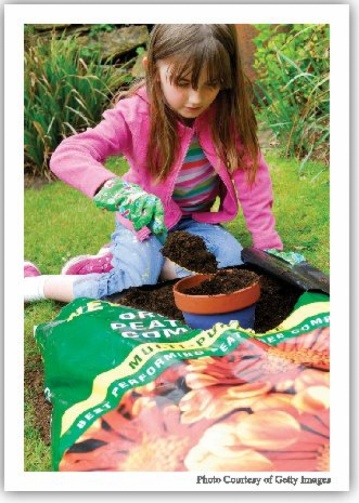
Building up the fertility of the soil is one of the most important aspects of gardening. Synthetic fertilizers are manufactured products, while organic fertilizers are derived from plants, animals, or naturally occurring minerals. While both can go through a manufacturing process, there are advantages to using an organic fertilizer that´s in a form close to its natural source.
The Advantage of Organics
The purest form of organic fertilizer is a plant-, animal-, or mineral-based fertilizer that is applied to the garden without any processing. Good examples of these are green manures, animal manures, and wood ashes. The advantage is that not only are main nutrients added to the soil, but organic matter and humus, as well. Organic matter improves soil structure, moisture retention, drainage, and the microbial life of the soil. An adequate amount of organic matter in the soil can help ensure that nutrients are available to plants on a steady basis and that the soil structure enhances root growth. Organic fertilizers dole out the nutrients more slowly than chemical fertilizers, so plant roots are less likely to be burned by getting too high a dose.
The best way to use organic fertilizers is to apply a combination of raw materials high in organic matter, such as manure, along with specific organic fertilizers to target crop needs.
This is not to say there isn´t a place for synthetic fertilizers. They do have some advantages. They cost less and are easier to transport, and they are more uniform in nutrient content. With the exception of controlled-release formulations, most synthetic fertilizers are more quickly available to plants than organic fertilizers.
Types of Organic Fertilizers
Here are some examples of plant- and animal-based products you might use in your garden.
• Plant-Based Fertilizers
• Alfalfa Meal
• Corn Gluten
• Cottonseed Meal
• Seaweed
• Soybean Meal
• Animal-Based Fertilizers
• Blood Meal
• Bonemeal
• Fish Products
• Animal Manures
• Compost
Animal Manures
The nutrient composition of animal manures varies based on the animal, the bedding, and method of manure storage. Aged manure is better than fresh, and cow is better than horse (high in weed seeds). Cow manure is the manure most commonly found bagged in garden centers. While nutrient content is low, the plants can absorb them moderately quickly. Manure from sea birds, chickens and bats is rich in nutrients, especially nitrogen. Highly soluble and quickly available nutrients are useful early in the season to stimulate vegetative growth. However, high-nitrogen chicken manures and guanos can burn tender plant roots. It´s best to use them as a foliar feed, diluted in water; or in a composted form.
Compost
Compost is considered the Cadillac of organic fertilizers. The beauty of making compost is that no matter what material you start with, the end product is relatively similar. Finished compost has a low but good balance of nutrients, while being high in organic matter that helps feed the soil´s microorganisms.
Composts are available commercially or you can make your own. They can be used along with other fertilizers. Making compost is a way to deal with yard waste and make fertilizer simultaneously, and you always know what ingredients went into the finished product.
For more tips and garden information, visit:






















